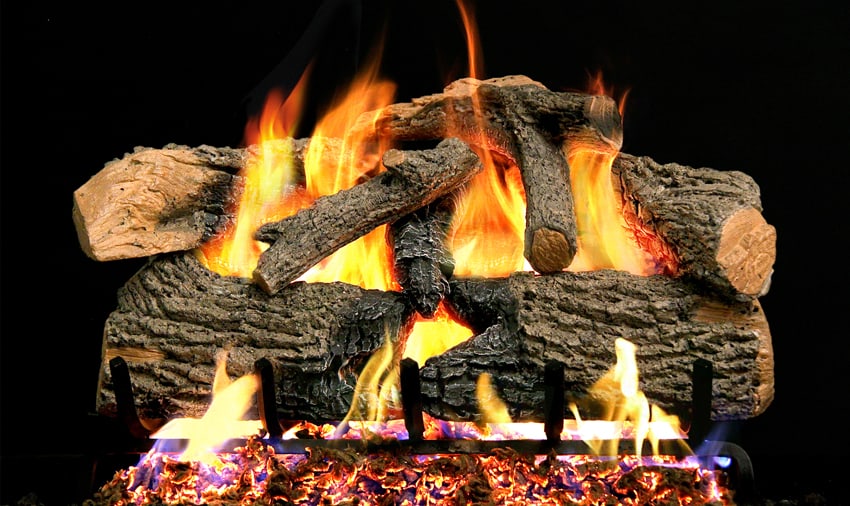What is the difference between a Wood Burning and Gas Fireplace?

Understanding the differences between wood burning and gas fireplace is important for homeowners who are considering adding a fireplace to their home. Fireplaces not only provide warmth but also create a cozy ambiance, making them a desirable feature for many households. In this article, we will explore the main differences between wood-burning and gas fireplaces, including their maintenance requirements, energy efficiency, installation process, aesthetic experience, and other factors to consider. For more information on chimney and fireplace services, readers can visit the website of Masters Services at Masters Services.
Fireplaces have long been a popular feature in homes, providing a focal point for gathering and adding a touch of elegance to any room. In addition to their aesthetic appeal, fireplaces also offer a practical heating solution during the colder months. However, with the variety of fireplace options available, it is important to understand the differences between wood-burning and gas fireplaces to make an informed decision that suits your needs and preferences.
Types of Fireplaces: Wood Burning and Gas Fireplaces
Wood-Burning Fireplaces
Wood-burning fireplaces are characterized by their empty firebox, door, and absence of ignitors or feeding devices. These fireplaces offer a unique aesthetic experience, with crackling sounds and the distinct smell of burning wood. The natural beauty and ambiance created by a wood-burning fireplace can enhance the overall atmosphere of a room, providing a cozy and inviting space for relaxation. However, it is important to note that wood-burning fireplaces require regular maintenance, such as cleaning the chimney and disposing of ashes. One drawback of wood-burning fireplaces is the higher heating costs associated with the need to acquire and store wood as fuel.
Gas Fireplaces
Gas fireplaces, on the other hand, feature ceramic logs, valves, a gas connection, an ignitor, and a control knob. They offer convenience and ease of use, as they can be easily switched on and off with the flick of a switch or the push of a button. Gas fireplaces are also known for their energy efficiency and cost-effectiveness. They provide consistent heating and have heating efficiency ratings ranging from 35% to 50% for gas inserts and 60% to 90% for gas heaters. Additionally, gas fireplace inserts are available, which can be installed into existing wood-burning fireplaces, offering a convenient and efficient alternative.
Gas fireplaces have gained popularity in recent years due to their hassle-free operation and lower maintenance requirements. They eliminate the need for chopping, storing, and hauling wood, making them a convenient option for homeowners who want the benefits of a fireplace without the associated labor. Gas fireplaces also provide more control over the flame and heat output, allowing users to adjust the temperature to their desired comfort level.
Comparison of Wood Burning and Gas Fireplaces
Maintenance and Safety
Wood-burning fireplaces require regular maintenance, including cleaning the chimney, removing ashes, and ensuring proper ventilation. It is crucial to have the chimney inspected by professionals before using a wood-burning fireplace to ensure safety and efficiency. Regular chimney inspections can help identify any potential issues, such as blockages or cracks, which can be addressed before they escalate into major problems.
Gas fireplaces, on the other hand, have lower maintenance needs, as they do not produce ashes or require chimney cleaning. However, it is important to determine if a gas fireplace is vented or vent-free, as vent-free fireplaces may require additional precautions. Vent-free gas fireplaces rely on indoor air for combustion, and while they are designed to burn cleanly, proper ventilation is essential to prevent the build-up of carbon monoxide.
Heating Efficiency
When it comes to heating efficiency, gas fireplaces have the advantage. Wood-burning fireplaces are less efficient in terms of heat output compared to gas fireplaces. Gas fireplaces provide consistent and adjustable heat, while wood-burning fireplaces may require more effort to maintain a steady temperature. Gas inserts have a heating efficiency rating of 35% to 50%, while gas heaters can reach heating efficiency ratings of 60% to 90%. This means that gas fireplaces are not only more effective at heating a room but also more energy-efficient, resulting in lower heating costs.
Installation and Cost
Installing a wood-burning fireplace can be complex and costly, especially if a masonry fireplace needs to be built. The construction of a masonry fireplace involves skilled labor and can take weeks to complete. In addition, the materials required, such as bricks and mortar, can add to the overall cost of installation. It is important to consider these factors when deciding on a wood-burning fireplace.
Gas fireplaces, on the other hand, offer easier installation, with minimal construction work required. They can be installed in a matter of days, depending on the complexity of the project. However, the installation of a gas fireplace may require a new gas line, which should be considered in the overall cost. It is recommended to consult with a professional installer to determine the feasibility and cost of installing a gas fireplace in your home.
Aesthetic and Experience
Wood-burning fireplaces offer a unique aesthetic experience, with the crackling sound of burning wood and the distinct smell that creates a cozy atmosphere. The visual appeal of a wood fire can add warmth and charm to any room, creating a focal point that draws people together. Wood-burning fireplaces also provide the flexibility to choose different types of wood for different effects. For example, pine wood produces a pleasant aroma, while hardwoods like oak and maple burn slowly and provide longer-lasting heat.
Gas fireplaces, on the other hand, offer realistic fires without sparks, providing a clean and hassle-free experience. They are designed to mimic the appearance of a wood-burning fire, with ceramic logs that resemble real wood. Gas fireplaces also offer the convenience of adjustable flame height and temperature control, allowing users to create the desired ambiance with ease. While they may lack the distinctive smell and crackling sounds of wood-burning fireplaces, gas fireplaces provide a consistent and reliable source of heat and visual appeal.
Factors to Consider in Choosing a Fireplace
When choosing between a wood-burning and gas fireplace, personal preferences, heating needs, available resources, and maintenance requirements should be taken into consideration. It is important to evaluate the level of maintenance and associated costs, as well as the desired aesthetic and experience. Some homeowners may prioritize the traditional and rustic charm of a wood-burning fireplace, while others may prefer the convenience and efficiency of a gas fireplace. Considering factors such as budget, access to fuel sources, and overall lifestyle can help determine the best fireplace option for your home.
Understanding the differences between wood-burning and gas fireplaces is essential for homeowners looking to incorporate a fireplace into their homes. Wood-burning fireplaces offer a unique aesthetic experience but require regular maintenance and have higher heating costs. Gas fireplaces, on the other hand, provide convenience, energy efficiency, and easier maintenance. Factors such as personal preferences, heating needs, and available resources should be considered when making a decision. Whether you choose a wood-burning or gas fireplace, both options can enhance the ambiance and warmth of your home. For more information on chimney and fireplace services, readers can visit the website of Masters Services at Masters Services.
Trusted Wood Burning and Gas Fireplace Repair Service in Dallas, TX
At Masters Services Chimney & Masonry, we hope this blog post has clarified the distinctions between wood-burning and gas fireplaces. If you’re in need of wood burning and gas fireplace service, our experts in Dallas-Fort Worth Metroplex, TX are there to assist you. Contact us today to discuss your fireplace needs and make the right choice for your home. With our experienced team by your side, you can enjoy the warmth and ambiance of your fireplace with confidence. Don’t hesitate to reach out and let us help you create a cozy and inviting environment for your family.
Masters Services Chimney & Masonry – DFW
11245 Goodnight Ln #35, Dallas, TX 75229
(972) 877-4650










